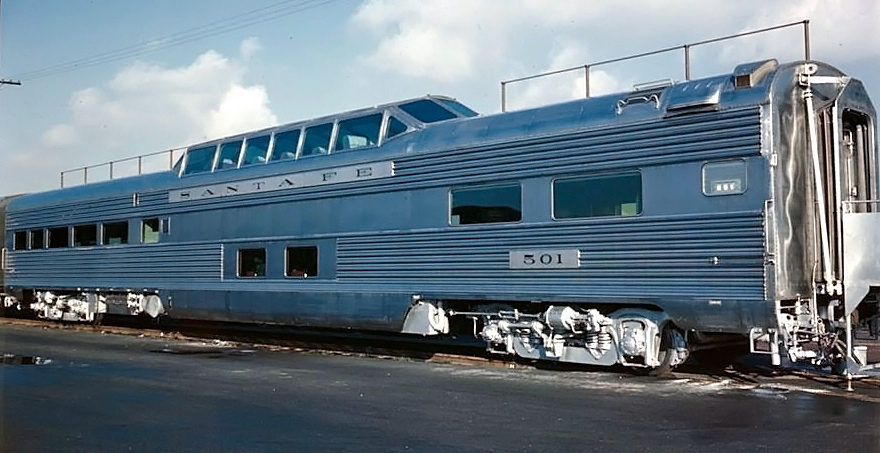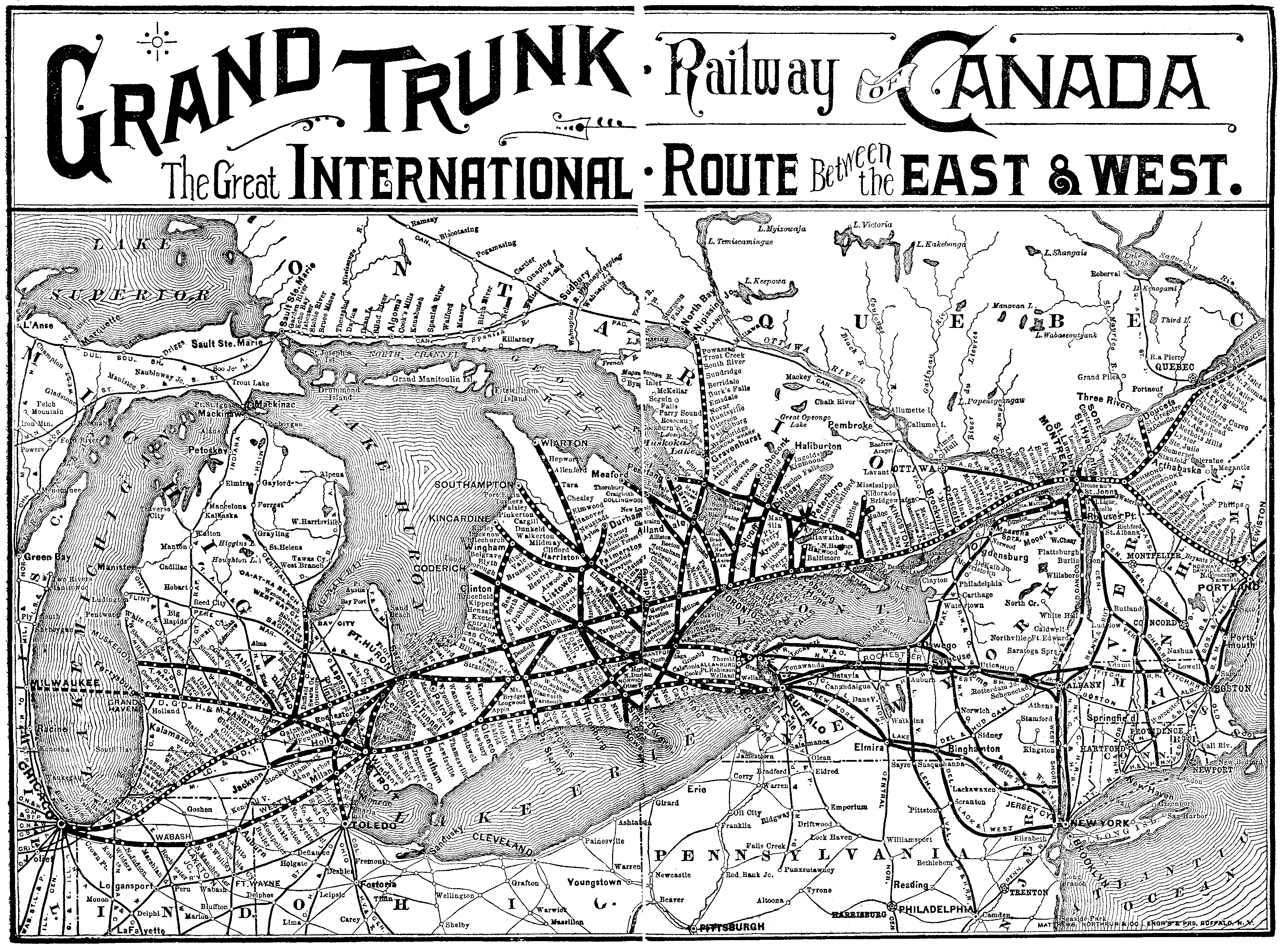The Pleasure Dome: Accentuating The Super Chief
Published: February 15, 2025
By: Adam Burns
Traveling by train has a long history of inciting romantic notions of adventure and elegance. Among the rolling steel wheels and rhythmic clatter, few experiences encapsulate the golden age of rail travel quite like the Pleasure Dome railcar. A symbol of luxury, innovation, and a bygone era of leisurely travel, the Pleasure Dome leaves an indelible mark on the history of American railways.
Origins of the Pleasure Dome
The story of the Pleasure Dome railcar begins in the mid-20th century when the passenger railroad industry in the United States saw unprecedented growth. During this time, the Santa Fe Railway emerged as a pioneering force, determined to redefine the standard of luxury rail travel. On the crest of this ambition was the introduction of the "Super Chief," a train service that came to be known as "The Train of the Stars" due to its popularity among Hollywood celebrities.
Integral to the allure of the Super Chief was the Pleasure Dome railcar, an innovative design unveiled in 1951. It was considered a marvel of modern engineering and opulent design, a departure from conventional passenger cars with its distinctive dome feature.
#### Architectural Design and Features
The Pleasure Dome was crafted to exude elegance while offering passengers panoramic views of the stunning American landscape. These railcars featured a raised section with large, curved glass windows, providing an almost unobstructed view of the surroundings. This dome concept was revolutionary, offering passengers an immersive experience that transformed the journey into a scenic delight.
The interior of the Pleasure Dome was no less impressive. Designed by the renowned streamliner designer Cesar Vergara, the car's interior boasted plush seating, rich wood paneling, and art deco accents that captured the glamour of the era. The seating arrangement was designed for social interaction and comfort, with chairs that swiveled to ensure passengers could always find the perfect view.
At the heart of the Pleasure Dome was the famed "Turquoise Room," an exclusive dining area that catered to the elite passengers of the Super Chief. Known as the only private dining room on a scheduled passenger train in the United States at that time, it served gourmet meals crafted by top chefs, further enhancing the atmosphere of sophistication and exclusivity.
#### Innovation Meets Luxury
The Pleasure Dome railcar was distinct not only for its luxurious ambiance but also for its innovative features. The railcar integrated the latest technological advancements of its time, including temperature regulation systems and advanced suspension technology that ensured a smooth ride. The construction utilized lightweight materials to improve fuel efficiency and speed, allowing the Super Chief to maintain its schedule without compromising passenger comfort.
Integral to its design was the seamless incorporation of observation and leisure areas. Passengers could transition effortlessly from enjoying the views in the dome section to relaxing in the lounge areas, complete with stylish bars serving cocktails, a testament to the era's penchant for glamorous socializing.
#### Cultural Impact and Legacy
The Pleasure Dome and its parent train, the Super Chief, were emblematic of a cultural phenomenon that celebrated travel as a luxurious experience, distinct from the mere point-to-point journeys of today. Its clientele included luminaries such as Bing Crosby, Frank Sinatra, and Judy Garland, who added to the train's allure and prestige. The Pleasure Dome thus symbolized not just luxury travel but became a cultural touchstone for an era that cherished elegance and sophistication.
Its cultural impact was further magnified by the frequent depiction of the Super Chief in film and literature, casting it as a character in narratives that romanticized rail travel. The Pleasure Dome's unique blend of luxury and innovation left a lasting impression on the public imagination and set a benchmark for subsequent transportation design.
#### The Decline and Modern Resurgence
Despite its opulent offerings, the Pleasure Dome and its parent services faced challenges. The rise of commercial aviation during the latter half of the 20th century shifted public preference towards faster modes of transportation. This change, coupled with the increasing affordability of air travel, led to a decline in the significance of luxury train services.
By the late 1960s and early 1970s, the landscape of American rail travel had changed significantly. Many rail services, including the Super Chief, were discontinued or reimagined under the aegis of Amtrak, which took over passenger routes. The original Pleasure Dome cars were gradually retired, marking the end of an era of grandiose rail travel.
Interestingly, the Pleasure Dome's legacy continues as a testament to the enduring appeal of luxury rail travel. In recent years, there has been a resurgence of interest in nostalgia-driven experiences. Scenic rail journeys have gained popularity, reminiscent of the golden days of the Santa Fe Super Chief. Companies have restored vintage railcars, including domed cars, to offer travelers a taste of that bygone luxury.
#### Conclusion
The Pleasure Dome railcar stands as a symbol of an era when rail travel was about more than reaching a destination; it was an experience steeped in luxury and grandeur. Its legacy endures not only in the restorations of classic railcars but also in the renewed interest in luxury train journeys that emphasize leisurely, scenic traveling against the backdrop of modern life’s fast pace.
As new generations step aboard these historic railcars, they are not merely passengers but participants in a storied tradition, retracing routes of history where every journey is enriched with tales of glamour, innovation, and cultural significance. The Pleasure Dome remains an indelible emblem of an era that celebrated the journey as a passage through opulence and vistas of unparalleled beauty.
Your second block of text...
Recent Articles
-
The Pleasure Dome: Accentuating The Super Chief
Feb 15, 25 12:34 AM
The Pleasure Dome was Santa Fe's version of the dome car, joining the Super Chief in 1951. Six were ultimately built by Pullman-Standard. -
Toledo & Ohio Central Railway: A Future NYC Subsidiary
Feb 15, 25 12:24 AM
The Toledo & Ohio Central was a notable Ohio system that served western parts of Ohio and also reached into West Virginia via a subsidary. It was acquired by the NYC in 1928. -
Grand Trunk Railway: Connecting Canada And The U.S.
Feb 15, 25 12:17 AM
The Grand Trunk Railway was a major Canadian/U.S. system that connected Ontario, Quebec, and northern U.S. states. It was acquired by Canadian National inj 1923



